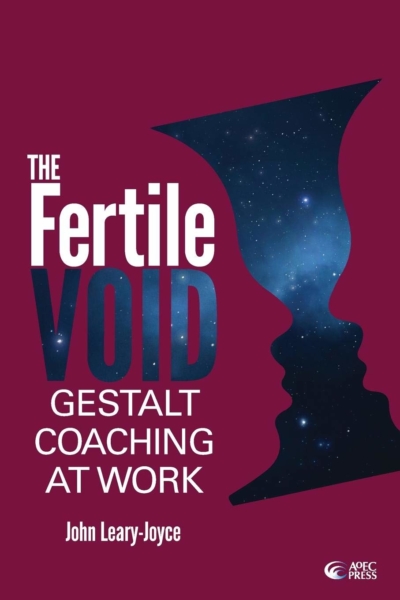We don’t tend to see the world as it really is. We filter the things we see and learn based on our feelings, experiences, beliefs and priorities. You do it, I do it, we all do it, but it’s often helpful to challenge these assumptions. One of the most effective ways to do so is to engage in behavioural experiments, a proven way to test our beliefs about ourselves, other people, and our surroundings, and find workable solutions to help us perform better.
As a coach, experimentation is incredibly powerful. People get genuine insights and value from experimentation. It helps clients to understand the complexities of a situation, loosen up, experiment creatively, try things out, and ultimately become better at learning: more active, more reflective, more focused on the present and more aware of the potential of change.
So how can you work with experimentation in your sessions? Here’s some ideas for you.

What experimentation means in this context
In a coaching context experimentation means devising a few different, new steps the client can take to address something they want to change, a fresh way of behaving or being. Maybe they’re overplaying a strength or underplaying an important aspect of themselves. Perhaps they’re in a completely new situation and feel a bit lost, out of their depth.
Experimenting involves having a go and seeing what happens in a safe place, a space where failure doesn’t matter. Where your client feels no judgement about making a mistake. It is about trying the potential experiment out for size first during the coaching session, then going out and having a go with the new approach or set of actions. Trying the experiment out beyond that coaching session.
It is then about coming back to the next coaching session and reviewing what happened. At that point you might build on or adjust the experiment. Sometimes it doesn’t work at all. But that’s no problem – as talking it through to find out why and exploring a different, better way to drive positive change supports a rich and often fruitful coaching coaching conversation. New experiments can always be devised.
Why experimentation matters
According to John Leary-Joyce’s excellent book below, actively experimenting in and then beyond the coaching sessions is, “the cornerstone of experiential learning. It transforms talking about doing something, stale reminiscing and theorising into being fully here, with all one’s imagination, energy and excitement.”
The Fertile Void – Gestalt Coaching at Work
At the Listening Partnership, we highly recommend this book for coaches who are interesting in experimentation and Gestalt Coaching in general. It is clearly written and the author demonstrates the depth of his coaching experience, as well as the strong, practical application of Gestalt for coaches.
Leary-Joyce suggests there are several ways for a coach to work with clients in a session to frame experimentation. He provides four levels of approach, all of which your clients might find useful during a session:
- Level one: Dissociation
- Level two: Imagining Personal Experience
- Level three: Physical Enactment
- Level four: Direct Communication
Your first step is to ask the client’s permission to experiment, and make sure they’re willing to explore the potential. The purpose in the here and now of the session is to allow experiments to loosen the ground and let active learning take place – learning clients can then usefully apply to external issues.
You might find a client responds best to the first level, the last, or one in between. You might start at a more surface level to improve someone’s confidence then drill deeper to take a level 4 approach in a future session. You might take it to level 4 immediately. There is a choice of impactful methods to foster positive experiments. No level is the right or wrong approach. It is about what works best for the client within the coaching relationship, at that moment and in relation to the work context they are dealing with in the session.
Level one: Dissociation
Level one is the least challenging approach. It helps the client gain a fresh, new perspective because they dissociate themselves from the problem, the issue, or the person in question, finally able to distance themselves. And that means they can clearly see the wider view, winning insight in much the same way as you do when watching a film unfold. There’s a lot to be said for simply taking yourself out of the picture for a while, standing back, and observing.
Level two: Imagining Personal Experience
Level two is more to do with helping a client access positive feelings. This is particularly useful when they’re feeling unenthusiastic or have concerns about an upcoming event or project. As the coach, you can ask your client to quietly imagine that the event has gone really well, and they are excited about it. Often this evokes feelings that are felt in the body. Simply exploring how they might draw on these positive feelings in their current context can make a surprising difference.
Your client may want to imagine what they’d say, and how they’d say it. They might find it easier to imagine expressing the issue to a friend, or even choosing an object in the room that describes the qualities and characteristics they want to access, draw on and develop. The client then feels more equipped to go ahead and experiment in a new way of communicating or acting outside the coaching session.
Level three: Physical Enactment
Level three is about actual physical enactment. It can feel risky in a coaching session, and the client may well experience uncomfortable feelings. This is operating at a deeper level, and it is about practising and actually acting out the scenario. The very nature of the experiment can be revealing and the client may find it hard to be their usual, more relaxed self, leading to ‘clunky’ communications. But giving people a safe space and a strong bedrock of trust within the coaching relationship, means the learning and reviewing process via physical enactment can be extremely valuable. It can then onwards markedly reduce stress. Learning from the enactment can build confidence as the client returns to face the real-life situation they had previously feared, having gained more clarity and often more courage.
Level four: Direct Communication
At level four, direct communication delivers a particularly powerful way to experiment. The client expresses in words, as best they can, what they want to say about the issue or say to the person involved. It is said directly to you as the coach. You hear the words, then you explore how the client thought they came across and look at their feelings in the moment. You also provide your reaction, feedback and general response. The key thing here is the client’s emotional expression, the shape and content of what they say, and the impact it has upon you as the coach. As you can imagine, a great deal of specific feedback, exploration of responses and new insight emerges from level four direct communications.
Some examples

Imagine your client always tends to talk last in a group. They want to come in differently and speak earlier, even speak first. You might kick off with a discussion about the group dynamics and their contribution to it. Your client needs to create new strategies to enhance the way they appear to the group. Doing something differently, changing their passivity, is a powerful thing. Maybe they’ll decide to ask a clarifying question rather than feeling forced to prove themselves by making fully formed, interesting points. Your coaching can explore experimentally and experientially what makes them self-conscious, and what holds them back from speaking more in that particular group.
Maybe your client has got into the habit of interrupting others, and they’ve already had feedback about their poor listening skills. It’s a bad habit, but it can be broken. In this case, changing their stance to one of curiosity about what the other person is thinking and saying is a really effective first step. Practising deeper listening within the coaching session can begin this process. It provides real experiential learning and fosters a different way of building relationships. One where the client develops greater empathy and rapport, then doesn’t have the same need to interrupt or have either the first or the last word.
If you think there’s a strong connection between experimentation and changing habits, you’re right. Here are two useful links to blog posts on the subject:
Experiment to grow your confidence
If you are a coach who would like to understand more about experimentation in your coaching practice, then do get in touch to book a supervision session. We are here to help you find some new, fresh approaches and to experiment for yourself!
About us
We are a team of highly experienced executive coaches, focused on developing leaders working in high-stakes environments across diverse sectors. We create space for leaders to step back, think clearly, and navigate complexity with confidence and renewed purpose. Our narrative-based approach blends deep listening, incisive questioning and rigorous thinking with a strong commercial focus.
“Our Knowledge Centre is designed to resource leadership practice and development. The articles we share on this site are intended to spark fresh thinking, offer practical tools, and support continuous professional growth.”
Jude Elliman
Founder
Our approach
We work with leaders to build their leadership brand and impact. Our approach includes:
✔ Challenge and support: creating time and space for rigorous thinking and problem-solving
✔ Narrative coaching: defining and refining the stories that shape leaders and organisations
✔ Commercial focus: cutting through complexity for strategies that inspire change and drive results
We help leaders make crucial decisions, align teams for greater effectiveness, and envision new possibilities for the future.

